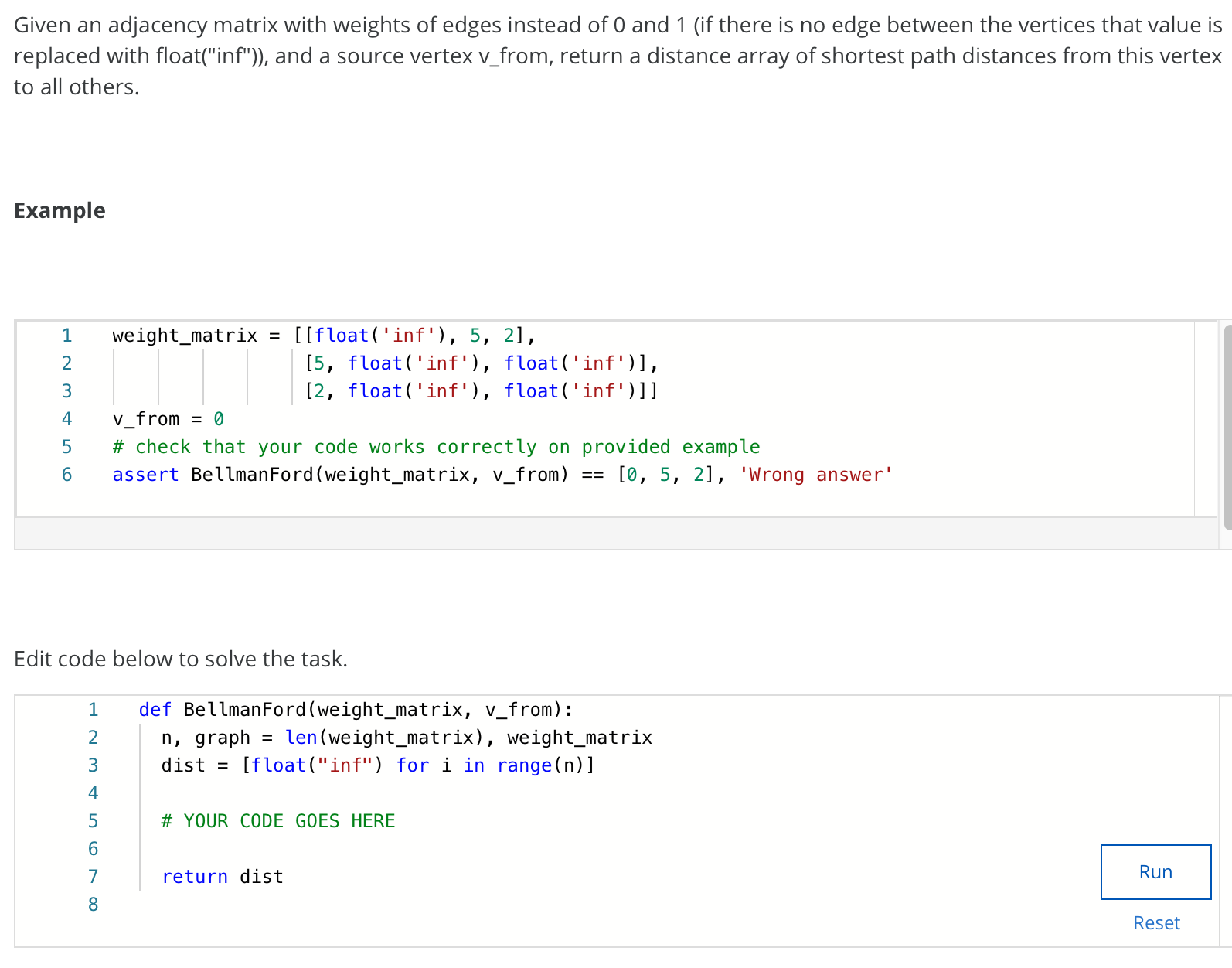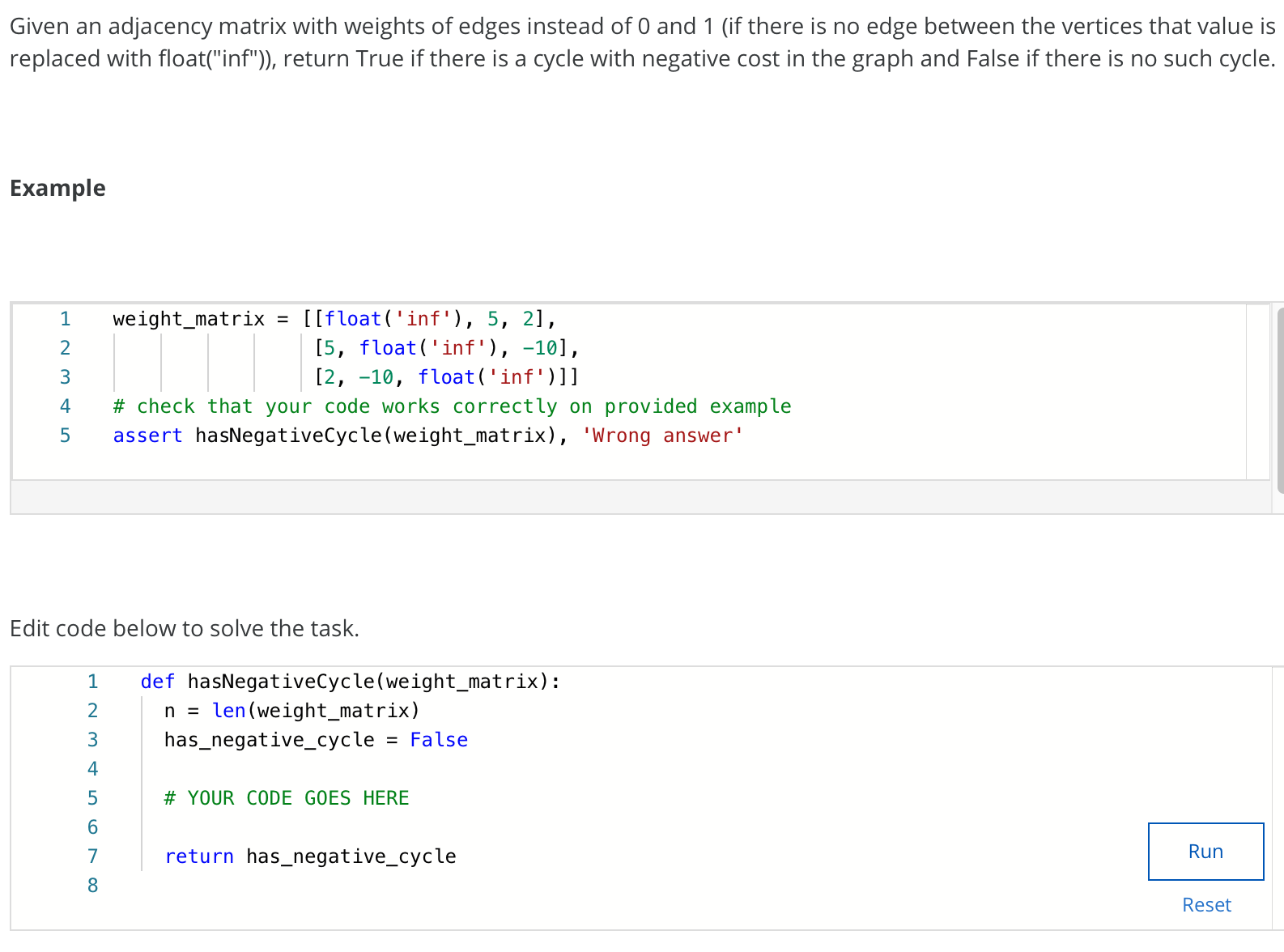# Q- 1
#Q-2
 code right in "your code goes here"
code right in "your code goes here"
Given an adjacency matrix with weights of edges instead of 0 and 1 (if there is no edge between the vertices that value is replaced with float("inf")), and a source vertex v_from, return a distance array of shortest path distances from this vertex to all others. Example = 3 weight_matrix [[float('inf'), 5, 2], [5, float('inf'), float('inf')], [2, float('inf'), float('inf')]] v_from # check that your code works correctly on provided example assert BellmanFord (weight_matrix, v_from) [0, 5, 2], 'Wrong answer' 4 Edit code below to solve the task. 1 def BellmanFord(weight_matrix, v_from): n, graph len (weight_matrix), weight_matrix dist = [float("inf") for i in range(n)] 2 3 = # YOUR CODE GOES HERE 4 5 6 7 8 return dist Run Reset Given an adjacency matrix with weights of edges instead of 0 and 1 (if there is no edge between the vertices that value is replaced with float("inf")), return True if there is a cycle with negative cost in the graph and False if there is no such cycle. Example 1 2 3 weight_matrix = [[float('inf'), 5, 2], [5, float('inf'), -10], [2, -10, float('inf')]] # check that your code works correctly on provided example assert hasNegativeCycle(weight_matrix), 'Wrong answer' 4 5 Edit code below to solve the task. 1 def hasNegativeCycle(weight_matrix): len (weight_matrix) has_negative_cycle = False 2 3 n = 4 5 # YOUR CODE GOES HERE 6 7 return has negative_cycle Run 8 Reset Given an adjacency matrix with weights of edges instead of 0 and 1 (if there is no edge between the vertices that value is replaced with float("inf")), and a source vertex v_from, return a distance array of shortest path distances from this vertex to all others. Example = 3 weight_matrix [[float('inf'), 5, 2], [5, float('inf'), float('inf')], [2, float('inf'), float('inf')]] v_from # check that your code works correctly on provided example assert BellmanFord (weight_matrix, v_from) [0, 5, 2], 'Wrong answer' 4 Edit code below to solve the task. 1 def BellmanFord(weight_matrix, v_from): n, graph len (weight_matrix), weight_matrix dist = [float("inf") for i in range(n)] 2 3 = # YOUR CODE GOES HERE 4 5 6 7 8 return dist Run Reset Given an adjacency matrix with weights of edges instead of 0 and 1 (if there is no edge between the vertices that value is replaced with float("inf")), return True if there is a cycle with negative cost in the graph and False if there is no such cycle. Example 1 2 3 weight_matrix = [[float('inf'), 5, 2], [5, float('inf'), -10], [2, -10, float('inf')]] # check that your code works correctly on provided example assert hasNegativeCycle(weight_matrix), 'Wrong answer' 4 5 Edit code below to solve the task. 1 def hasNegativeCycle(weight_matrix): len (weight_matrix) has_negative_cycle = False 2 3 n = 4 5 # YOUR CODE GOES HERE 6 7 return has negative_cycle Run 8 Reset

 code right in "your code goes here"
code right in "your code goes here"





